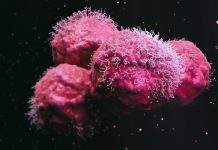Researchers at the University of Glasgow have developed the first bioengineered human bone-marrow model to test CAR T-cell therapies for acute myeloid leukaemia, offering a more accurate, non-animal testing platform
Scientists at the University of Glasgow, with the support of UK Research and Innovation (UKRI) funding, have achieved a significant breakthrough. They have successfully developed a lab-grown bone marrow model that faithfully replicates the human environment. This model has been instrumental in testing novel CAR T-cell therapy approaches for acute myeloid leukaemia (AML), marking a major leap forward in leukaemia research. The use of this model promises more reliable, human-relevant pre-clinical testing, thereby reducing our reliance on animal models.
The research is detailed in the journal Biomaterials.
Reducing reliance on animal models in cancer research
The researchers designed chimeric antigen receptor (CAR) T-cell therapy, which has shown promise in treating acute myeloid leukaemia (AML), the most common leukaemia in adults.
This novel bioengineered model successfully delivered human-relevant insights that current research methods, which often rely on animal models, have been unable to achieve.
Leukaemia cancers are caused by mutations in hematopoietic stem cells (HSCs), which then rely on interactions with the bone marrow for their growth and survival. Studying these stem cells outside the human body is challenging, as they quickly die or change once removed from the bone marrow.
Research teams have relied heavily on animal models to test new drugs for blood cancers, including leukaemia. However, these models have limitations, as they often fail to accurately mimic the human disease, leading to potential discrepancies in the effectiveness and safety of the tested therapies.
Transforming CAR-T cell therapies for AML
Glasgow scientists have now successfully researched leukaemic HSCs. They achieved this by inserting them into bioengineered, jelly-like substances called hydrogels, which mimic the natural environment of bone marrow.
The team targeted cancer cells with CAR T-cell therapy to determine if it could effectively treat the disease. While this is an early-stage study, the approach opens the door to more accurate pre-clinical testing.
CAR-T cell therapy has previously been unsuccessful for AML for several reasons, including toxicity to local healthy cells.
By combining CRISPR-Cas9 gene editing with CAR T-cell therapy, this approach could have the potential to selectively target AML cells while sparing healthy tissue. This is achieved by making healthy cells ‘invisible’ to CAR T-cells, a process that involves modifying the cells to prevent them from being targeted by the therapy. The effectiveness of this treatment combination has been complicated due to differences between humans and animal models.
The team utilised their bioengineered stem cell model to provide key new insights into the efficacy and safety of CAR T-cell therapy for AML.
They found that conventional testing methods, typically cells in a Petri dish, both overestimated the effectiveness of CAR T-cell therapy and failed to predict its harmful effects on healthy cells.
The new findings have clear implications, not only for future research on CAR T-cell therapy for AML, but also on approaches to pre-clinical CAR T-cell testing.
Dr Hannah Donnelly, one of the lead authors of the study and a research fellow at the University of Glasgow, said: “There is a significant translational gap in cell therapy development. Conventional, oversimplified testing methods often fail to predict how therapies will behave in humans. This gap leads to high failure rates in clinical trials, which increase costs and delay treatments for patients.
By using human cells combined with hydrogels to mimic the complex structure of the bone marrow in the lab, we’ve shown that it’s possible to assess both the effectiveness of therapies and detect off-target effects much earlier, well before they reach the expensive clinical trial stage.
Our results highlight the potential of non-animal technologies for studying and developing new leukaemia therapies.
This approach could reduce reliance on animal models in drug testing over time, ultimately paving the way for more efficient and effective development of therapies for patients.”











